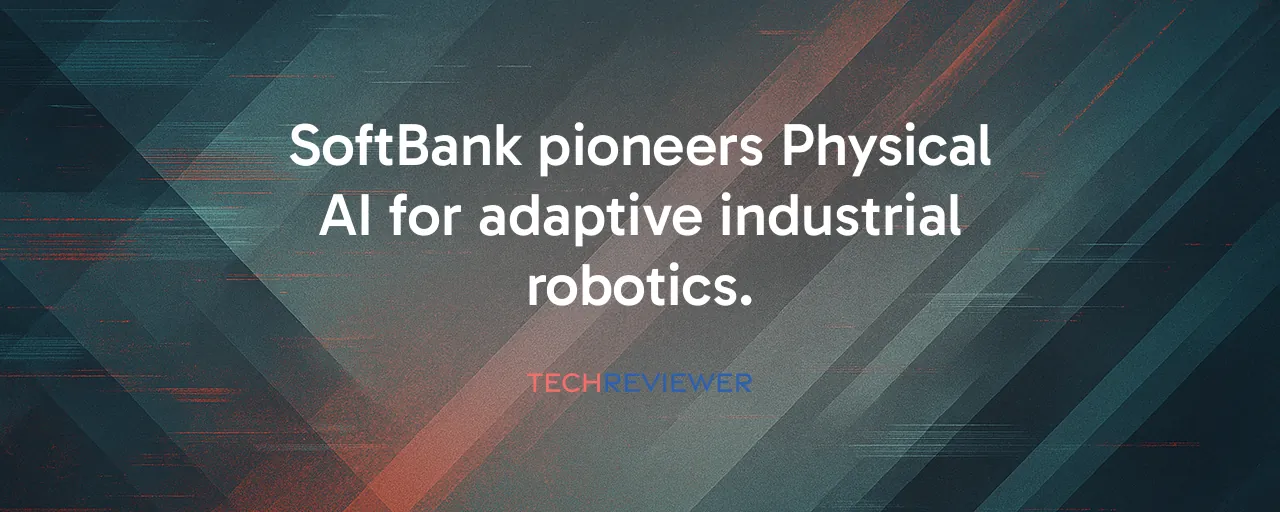A Bold Leap Into Physical AI
SoftBank's recent acquisition of ABB Group’s robotics business unit for $5.375 billion signals a major shift in the future of automation. The Japanese conglomerate, led by visionary Masayoshi Son, is doubling down on what it calls Physical AI: systems that combine artificial intelligence with robots that can interact with the real world. ABB's robotics unit, based in Zurich, brings 7,000 employees and a portfolio of machines that pick, paint, assemble, weld, clean, and handle materials across industries like automotive and logistics. With $2.3 billion in revenue last year, the division is a powerhouse, even if its sales dipped slightly from 2023's $2.5 billion. SoftBank sees a chance to revitalize this business by infusing it with cutting-edge AI, potentially transforming how factories operate.
This move comes at a pivotal moment. Automation is evolving beyond speeding up assembly lines to creating machines that think, adapt, and learn from their environments. SoftBank's bet is that integrating AI from its portfolio companies, like Skild AI, with ABB's hardware will produce robots capable of handling complex, unpredictable tasks. Imagine a warehouse bot that learns to navigate clutter or pick irregular items with precision instead of just following a programmed path. The deal, expected to close in mid-to-late 2026 pending regulatory approval, positions SoftBank to challenge giants like FANUC and Yaskawa in the $18.6 billion industrial robotics market.
Lessons From the Front Lines
To understand what SoftBank's acquisition could mean, look at Amazon's fulfillment centers. The company has deployed thousands of mobile robots to streamline picking and packing, slashing delivery times. Some robots, like those powered by AI for computer vision and adaptive grasping, use AI to adapt to varied packages, learning from each task to improve efficiency. Amazon's approach shows how AI-driven robots can cut costs and boost output, but it also highlights a catch: human workers are still essential for tasks requiring judgment or dexterity. The company continues hiring, suggesting automation complements rather than replaces labor in some settings.
Contrast that with Tesla's Gigafactory in Nevada, where automation reaches 90 percent. Robots handle nearly every step of battery production, from welding to assembly, creating a near-silent factory that hums with precision. Tesla's success proves high automation can work, but it comes with trade-offs. The setup requires massive upfront investment, including millions in equipment, and highly skilled technicians to maintain it. For smaller manufacturers, that kind of capital is a tough sell. SoftBank's challenge will be scaling ABB's tech to make it accessible to firms beyond global titans, while proving AI can deliver measurable returns.
The Human Side of the Equation
For the 7,000 employees of ABB's robotics division, this acquisition brings uncertainty. Will SoftBank's push for AI integration mean new opportunities or restructuring? Workers in manufacturing already face a shifting landscape as robots take on repetitive tasks like welding or material handling. Collaborative robots, designed to work alongside humans, could ease some concerns by handling dangerous jobs, such as heavy lifting or toxic material exposure, while leaving decision-making to people. Still, fears of job displacement linger, especially in sectors like logistics, where automation is surging.
The broader impact on workers is a mixed bag. On one hand, robots can improve workplace safety and reduce physical strain. ABB's autonomous mobile robots, for instance, ferry materials in automotive plants, sparing workers repetitive treks. On the other hand, automation could shrink jobs in manufacturing-heavy regions, raising questions about retraining and economic stability. Policymakers may need to step in with programs to teach skills like robot programming or system integration, ensuring workers aren't left behind as companies like SoftBank push the boundaries of what robots can do.
Navigating a Complex Future
SoftBank's ambitions face real hurdles. Building robots that can think and act in messy, real-world settings is no small feat. Training AI to handle unpredictable variables, such as changing light conditions or irregular objects, requires massive datasets and computing power. Hardware issues, like battery life or motor durability, can also trip up progress. Then there's the regulatory maze: the deal needs approval from authorities in the EU, US, and China, who'll scrutinize its impact on competition and national security. Cybersecurity is another concern, as networked robots could be vulnerable to hacks that disrupt production or leak sensitive data.
Despite these challenges, the potential is undeniable. SoftBank's portfolio, including AutoStore and Agile Robots, could integrate with ABB's platforms to create end-to-end automation solutions. Envision a warehouse where robots handle everything from inventory to shipping, all powered by AI that learns on the fly. The industrial robotics market is set to hit $51.4 billion by 2034, and SoftBank's move could give it a hefty slice of that pie. For manufacturers, the question is how to balance cost, complexity, and human needs in a world where robots are getting smarter every day.
